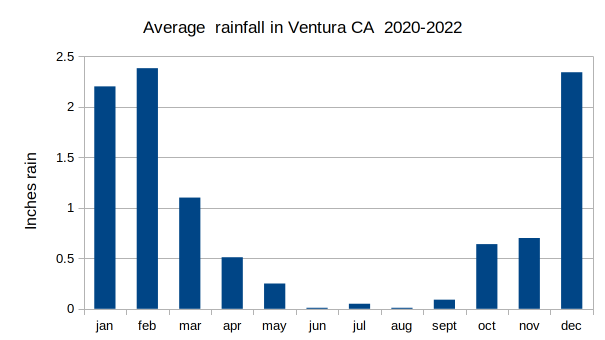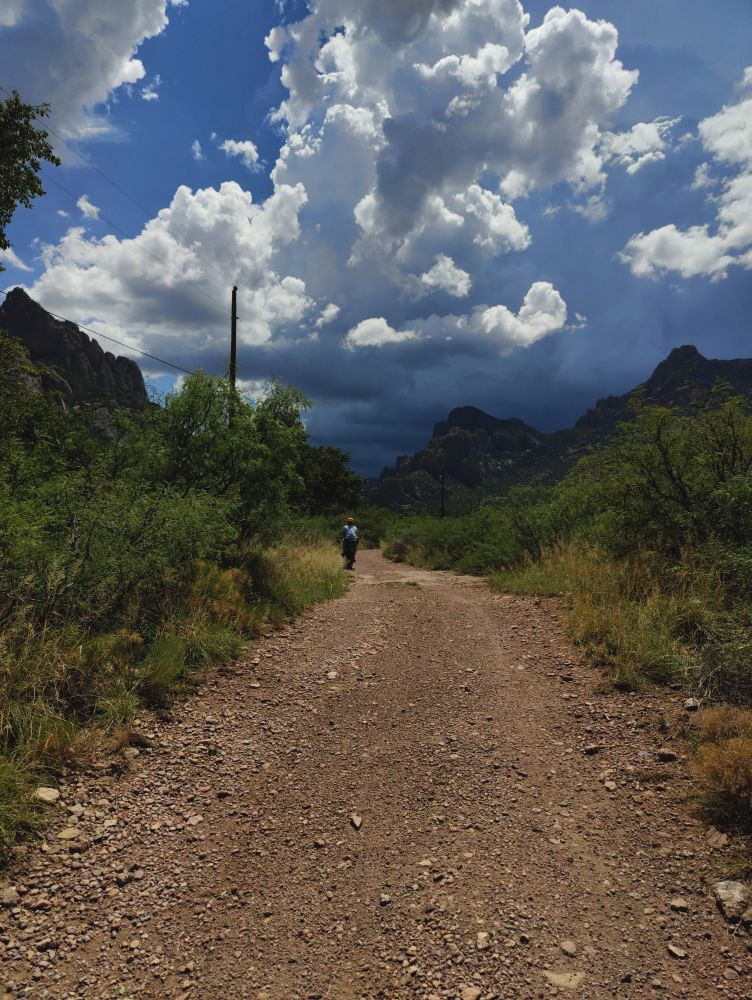If you live in a place where water falls from the sky during summer this blog is perhaps not so helpful. However, gardeners in much of the western United States will suffer this summer from hot days (sometimes record breaking) and will need to irrigate their gardens and trees in order for them to survive impending drought conditions. The ongoing drought has drained reservoirs and flows of rivers are down or, in some cases, dry entirely. Due to water scarcity, purveyors are restricting water use outside of homes and in some cases curtailing all landscape irrigation. Using water wisely in the landscape has never been more relevant than now. In this blog post we’ll continue to explore saving our gardens from drought and touch on water use, water demand and plant stress.
Good news — Bad news
The good news is that the longest day of the year was last month. That means that the days are ever so gradually getting shorter. As days shorten, plants use less water. Water use is tied directly to photosynthesis and when the lights are out there is no photosynthesis. Shorter days mean less demand for water. The bad news is that we may have record breaking hot days ahead. Plants become susceptible to wilt, sunburn and dieback during very hot weather. The best way to prevent this is to ensure that roots are moist during very hot weather.

Mediterranean Climate
It turns out that in Ventura, CA the longest day of the year is one of the historically driest months (least rainfall) and the shortest day occurs in a month with more rain than average. This is a classical Mediterranean climate, the rain falls when we least need it for thirsty plants. Plants may not use all the water that falls in winter but soil is leached of salts and deeper soil layers are filled with water. Large woody plants can utilize this deeper soil water in drier months.

Stress
What is not obvious is that stress, especially water stress, is not highest on the longest day but occurs and builds later in the summer and fall months. This is because water is slowly depleted from soils over time. Water use is compensated by irrigations during dry months so stress may not build depending on the effective use of irrigation to keep plants hydrated. Plants and gardens that are less reliant on irrigation build stress over time CUMULATIVELY until they are irrigated or rain falls again. So after the spring rains stop, the “stress clock” starts ticking and keeps building until rain or irrigation happens again in the fall or winter. It is no wonder that symptoms of stress such as wilt, sun burnt leaves, leaf fall and plant death occur in late summer when cumulative stress levels overcome plant physiological limits. Late summer often is the time when the hottest days occur and heat stress in addition to drought stress adds to the struggle for garden plants.

Save your plants in the fall from deadly stress
In the late summer or fall months plants are most likely to die of drought induced stress. This can be forestalled by irrigation applied in August which will reset the stress clock to lower levels. Stress won’t return to low wintertime levels because irrigation water is often of less quality than rain water. The salts in the irrigation water raise the osmotic potential of soil water creating another kind of stress. When it rains, these salts are washed from soil and plants are at their lowest stress levels.
Monsoons (see recent blog by Pam Knox) provide arid climates with stress relief when plants growing in hot deserts most need it. Many plants come out of dormancy or germinate only after the onset of summer rains. While monsoonal moisture can be unpredictable usually some rain falls in the desert southwest. In years when the monsoons don’t come or provide only low amounts of water, some trees or other woody plants even cacti, may die from stress.

Monitor your plants for stress as long dry periods or hot weather get longer and hotter. Apply water strategically to take off stress. Irrigate deeply by soaking the root ball(s) of the plant(s) you want to save. Established plants are pretty tough and can survive adverse periods, newly planted specimens not so much. They must be irrigated frequently just like they were in the nursery until their roots are will grown into site soils. For those of us living in a Mediterranean or monsoon climate we should wait until the onset of a wet period is near before installing new plants.
Jim, How do Larger woody plants utilize the deeper water when most Tree roots don’t go deeper than 12″ – 16″?
Hey cowboy Dan, good question. There are several ways. While the majority of tree absorbing roots at near the surface trees may or may not also have sinker roots and other deep roots that can access deeper soil profiles. Another way is that the mycorrhizae that trees are infected with go deeper and further from the roots and they may extend the depth from which soil moisture is pulled.
Thanks for the article. Anecdotally I feel that I have accidentally broken summer dormancy in some of my garden plants. They are fine, fine, fine, I water, and then they wilt much more often. Is it sometimes better to withhold summer water?
If the weather conditions are such that the plants gone into summer dormancy, don’t with hold water. The plants still need it, metabolic process are still occurring. They may not need as mush as when they’re actively growing but they still need some.
Be sure you’re watering correctly, don’t give little sips of water. Give a good deep drink so the soil moisture levels are deep.